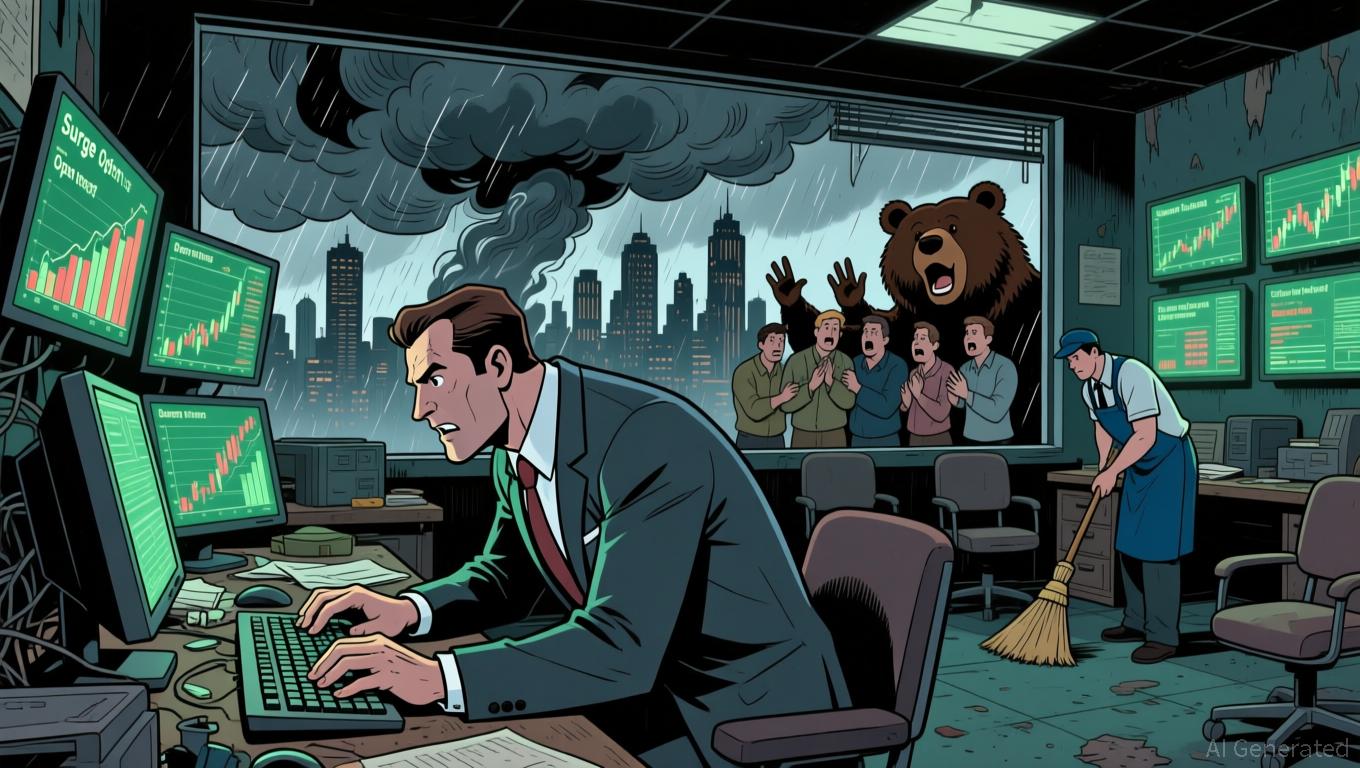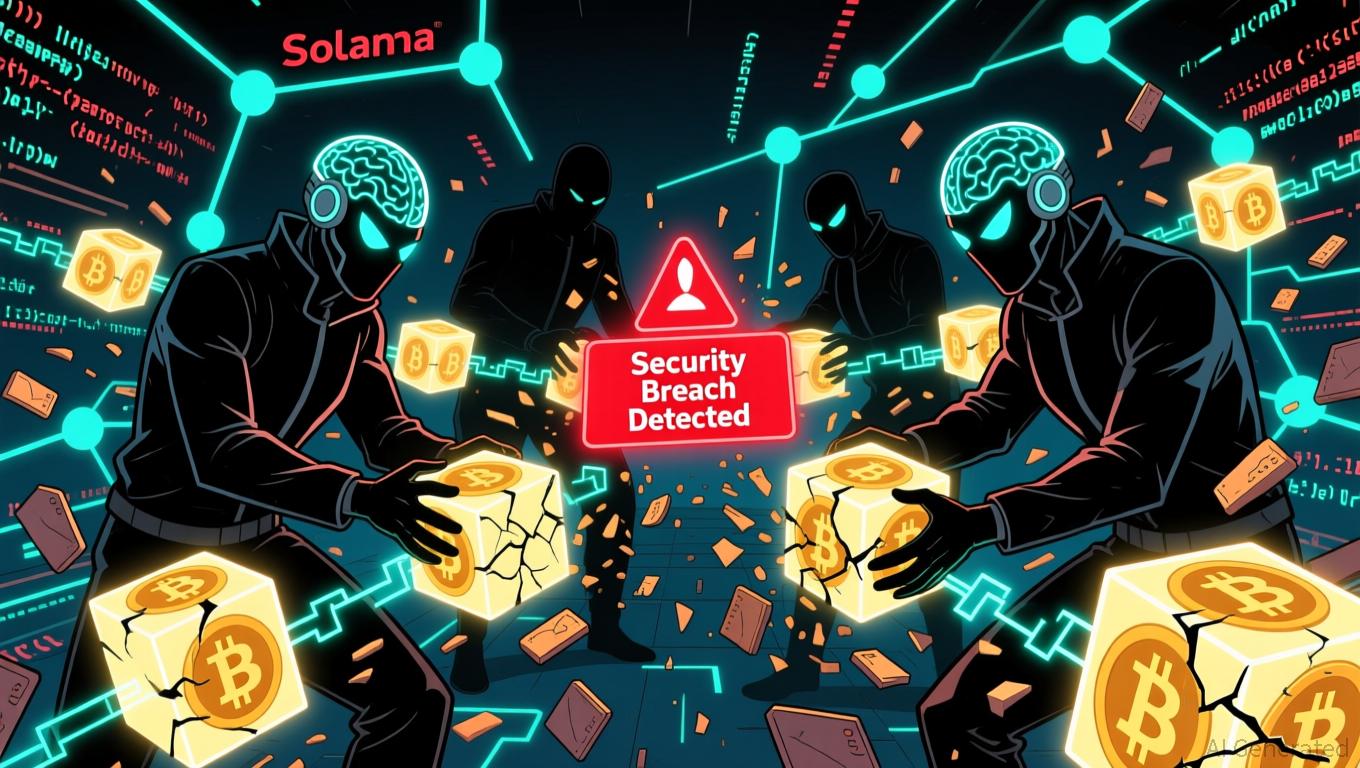BigBear.ai's Shares Soar 300%, but Financial Concerns Raise Questions About Its Valuation
- BigBear.ai's stock surged 300% in 2025 driven by defense AI contracts and partnerships like Tsecond Inc.'s rugged hardware integration. - Despite high-profile deployments (e.g., O'Hare Airport biometric system), Q2 2025 revenue fell 18% and net losses widened to $228.6M. - Analysts remain divided: some cite OB3 funding and $390M cash reserves as bullish, while others warn valuation (13× forward sales) exceeds fundamentals. - Competition from Palantir and C3.ai, plus reliance on $380M contract backlog, ra
In 2025, BigBear.ai's stock price has soared by more than 300%, driven by a surge in defense-related AI contracts and frequent comparisons to Palantir Technologies. Despite this impressive rally, experts remain divided on whether the momentum can last. The stock, which ended at $7.05 on October 24, has experienced significant swings, including a 22% jump in early October after announcing a collaboration with Tsecond Inc., as reported by a
The upward trend in the stock has also been supported by notable rollouts of its veriScan biometric system, such as at Chicago O'Hare International Airport, where it cut the time for processing international travelers from one minute to just ten seconds. These achievements coincide with increased federal spending on AI, especially the $300+ billion "One Big Beautiful Bill" (OB3) for defense and homeland security. Yet, BigBear's financial results present a mixed picture. In the second quarter of 2025, revenue dropped 18% year-over-year to $32.5 million, and a net loss of $228.6 million—mainly due to accounting adjustments—highlighted ongoing operational issues. The company has reduced its full-year revenue outlook to between $125 million and $140 million and has retracted its profit projections because of project setbacks.

There is no consensus among analysts regarding the stock's valuation. H.C. Wainwright has raised its price target to $8, pointing to a "stronger balance sheet" and benefits from OB3, while others caution that the stock is already valued at 13 times its projected sales, suggesting that much optimism is already reflected in the price. Simply Wall St's models estimate a fair value of $5.83, which is about 20% below the current price. At the same time, Seeking Alpha's review warns that BigBear's underlying business—especially its flat revenue growth—does not support the recent surge, describing the stock as "a valuation rally amid vanishing fundamentals", as stated in a
BigBear is up against tough competition from established names like Palantir and C3.ai. While these companies lead in defense and enterprise AI, BigBear's $30 million in quarterly sales is dwarfed by Palantir's multi-billion dollar revenues. C3.ai, which recently posted a 19% drop in revenue and a $116.7 million net loss, is also dealing with leadership changes and sales challenges, according to a
The next few weeks will be pivotal. The upcoming earnings report on November 10 may decide if the stock continues to climb or faces a pullback due to missed expectations. Optimists believe that BigBear's $390 million in cash and its strategic role in defense AI could drive long-term gains, while skeptics highlight the risks of depending on a handful of large contracts and the uncertainty of scaling its business.
As competition intensifies in the AI defense industry, BigBear.ai represents a high-risk wager on innovation versus financial fundamentals—a story that could shape its path in the near future.
Disclaimer: The content of this article solely reflects the author's opinion and does not represent the platform in any capacity. This article is not intended to serve as a reference for making investment decisions.
You may also like
XRP News Today: XRP ETF Momentum Contrasts with Declining Network Engagement
- XRP's ETF inflows exceed $420M daily, contrasting with 50% lower on-chain payment volume and declining transaction counts. - Technical indicators show fragile bullish momentum below $2.28, while RSI rejection and EMA positioning highlight bearish pressure. - Fed's 81% rate cut probability and ETF-driven demand could push XRP toward $3, but network activity weakness raises sustainability doubts. - MACD buy signals clash with declining 50-day EMA ($2.38) and structural vulnerabilities in ETF-dependent pric

Ethereum News Update: North Korean Cybercriminals' Cross-Chain Money Laundering Reveals Vulnerabilities in Crypto Security
- North Korean hackers suspected in $36.8M Upbit breach used multi-chain laundering across Solana and Ethereum to obscure stolen assets. - Upbit froze transactions, pledged user reimbursements, and faces regulatory fines for delayed reporting amid a $10.3B merger with Naver. - Attack mirrors 2019 Lazarus tactics, exposing crypto industry vulnerabilities as stolen funds were rapidly converted into $1.6M via 185 wallets. - Market volatility surged with altcoin price spikes, while regulators intensify scrutin

Blazpay's 24-Hour Timer: AI-Powered Token Set to Dominate the 2025 Cryptocurrency Surge
- Blazpay's Phase 4 presale enters final 24 hours with $1.52M raised and 78.6% tokens sold, outpacing initial sales projections. - Analysts highlight 3.4x-5x return potential for early buyers, citing AI-powered trading tools, multichain infrastructure, and audit-backed security protocols. - Investors can purchase BLAZ tokens via USDT/ETH/BNB through the official portal, with referral incentives and gamified rewards boosting community engagement. - Project emphasizes real-world utility including automated t

Bitcoin News Update: MSCI Regulation Ignites Tension Between Bitcoin and Major Traditional Financial Institutions
- MSCI's proposed rule to exclude firms with over 50% crypto assets risks triggering $8.8B in forced Bitcoin sell-offs from index-tracking funds by 2026. - JPMorgan's analysis highlights existential threats for crypto-focused companies like Strategy (MSTR), which could face $2.8B in passive outflows alone. - Critics accuse MSCI and JPMorgan of bias, citing the bank's anti-crypto stance and the "binary cliff effect" of the 50% threshold destabilizing market eligibility. - The debate reflects a clash between
